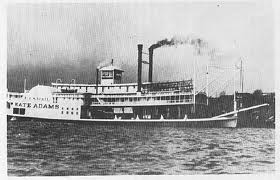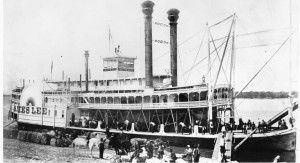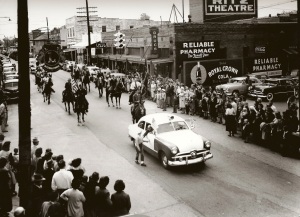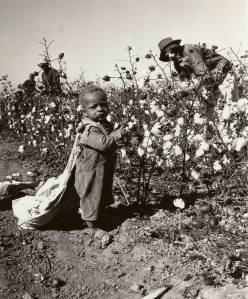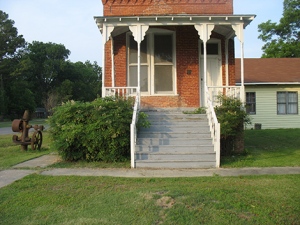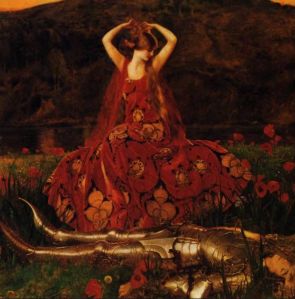“These are a few of my favorite things.”
—The Sound of Music
(To hear this song sung by Julie Andrews,
click here)
In the preceding post, titled “How the Words in Italics Changed My Whole Life,” I opened the discussion of a few of my favorite things.
This brief post will continue that theme by offering “Top-Five Lists” of some of those favorite things and others that I hope will be of interest to you.
The items in each of the following lists are not necessarily set in order of my appreciation of them. Also since there are so many of them, I did not try to insert links to each of the individual items, though most of them can probably be located by Googling them online. However, I did insert a few photos and explanatory notes to some entries that may not be as well-known as the others, especially by the younger generations.
The titles of musical shows, books, movies, etc. were set in italics per the University of Chicago Press Manual of Style, the “bible” of the book publishing industry, which I used in my decades of copyediting books and manuscripts both religious and secular. Some of the entries (such as Gone With the Wind) are included in more than one list (e.g., My Favorite Books and My Favorite Movies).
Since the title of this section of this introductory post on some of my favorite things is taken from a Hollywood musical, perhaps I should begin my “Top-Five Lists” with that subject: my top-five favorite musicals.
Some “Top-Five Lists” of
a Few of My Favorite Things
Musicals
1. My Fair Lady
2. Oklahoma!
3. The Music Man
4. The Sound of Music
5. Purlie (to read about this little-known African-American show based on a Southern book, click here; my favorite version of this show is the one with Robert Guillaume and Melba Moore; see the later list of my Favorite Black Beauties)
Southern/Mississippi River Books
1. Gone With the Wind
2. The Foxes of Harrow
3. The Iron Mistress
4. Rising Tide: The Great Mississippi River Flood and How It Changed America
5. Tom Sawyer/Huckleberry Finn (my favorite Mark Twain books which I read again and again as a boy, thus developing and cementing my love for the Mississippi River, the symbolic course of my entire life)
Southern/Mississippi River Movies
1. Gone With the Wind (the classic 1936 novel which I read in high school and then waited years to see when it was rereleased as a movie in 1969 while I was teaching French at Arkansas State University in Jonesboro)
2. Cat on a Hot Tin Roof (the 1958 version of Tennessee Williams’ most popular play set in the Delta with Elizabeth Taylor and Paul Newman as feuding marriage partners which I first saw at Ouachita Baptist College when it came out and which I still watch every time it comes on TV)
3. Raintree County (also with Elizabeth Taylor as a lovely but tortured and tormented Southern Belle)
4. The Long Hot Summer (with Paul Newman and Joanne Woodward set on a Southern plantation and opening with Newman being set off on land near Frenchman’s Bend by a Mississippi River barge); and O Brother, Where Art Thou (the 2000 movie with George Clooney set in the Mississippi Delta, with many locations familiar from my childhood and youth)
5. Baby Doll (the 1956 version of a Tennessee Williams play set in the Delta across the River from McGehee, Arkansas); Band of Angels (the 1957 film adaptation of Robert Penn Warren’s book about a Kentucky Belle who is sold “downriver” to New Orleans as a slave); and To Kill a Mockingbird (the film adaptation of Harper Lee’s best-selling novel by the same name which Mari and I saw in New Orleans in the early 1960s)
Movie Theme Songs
- “Tara’s Theme” from Gone With the Wind (to view a musical video of this song with scenes from the movie, click here)
- “Moonglow/Theme from the Movie Picnic” (to view a seven-minute musical video with scenes from the William Holden/Kim Novac movie Picnic, click here)
- “Yankee-Doodle Dandy” from the 1942 movie by the same title (to view a brief musical video of this song from the movie, click here)
- “The Theme from The Great Escape,” (to view a ten-minute opening of this movie with the theme song, click here); “The Theme from The Magnificent Seven” (to hear the theme from this movie, click here).
- “Lara’s Theme” from the movie Dr. Zhivago (to view a musical video of this song from the movie, click here).
Recently Received “Down Home” Photos
(and one Delta Link/Video; see photos and link below)
- Kate Adams steamboat (and sister boat called the James Lee), at Arkansas City, our county seat. For more information, click here.
- McGehee, Arkansas parade (in 1940s, to magnify, click on the photo and scroll to the right; the mounted boy in front of J.T. Henley, the bald man on horseback holding a flag, looks exactly like me. If you know for sure who he is, please add a comment.)
- Delta black cotton pickers near McGehee, Arkansas
- The Arkansas City Museum
- To view a seven-minute video of agricultural flyers (crop dusters) in Merigold, Mississippi, across the Mississippi River from my hometown of McGehee, Arkansas, click above and listen to the accents.
Note: The photos of the steamboats above were taken from “Lee Line Steamers/Riverboat History,” at http://leelinesteamers.com/?p=428. Except for the final photo of the Arkansas City Museum, all the other photos above were taken by Billie Seamans of McGehee, and are used by permission of his son Harry Seamans. (For more information about “Billie Seamans: Arkansas’ War Hero and Master Photographer” from my earlier post by that title, click here.) The aerial agricultural flying video in Mississippi was uploaded on July 22, 2001, a “Mississippi Roads” segment about Johnny Dorr, the “Father of Crop Dusting,” and may be accessed at: http://www.youtube.com/watch?v=SeEqoxxSFk0
Classic Non-Southern Movies (including Westerns)
- True Grit (both the 1969 John Wayne version and the 2012 Jeff Bridges version set in Fort Smith, Arkansas, and the neighboring Indian Territory, now known as Oklahoma)
- Giant (the 1956 film adaptation of Edna Ferber’s novel about Texas, starring Elizabeth Taylor, Rock Hudson, and James Dean)
- Yankee Doodle Dandy (the classic black-and-white 1942 version with James Cagney)
- The Maltese Falcon and Key Largo (1940s film noir movies starring Humphrey Bogart and Lauren Bacall)
- Shane (perhaps the ultimate Western, starring Alan Ladd, one of my favorite actors, born in Hot Springs, Arkansas)
Newspapers and Periodicals
- Tulsa World (as a “retired” religious copyeditor, I start each day with the (Tulsa) World in one hand and the Word (the French Bible) in the other)
- McGehee-Dermott (Arkansas) Times-News (covering both our hometown of McGehee and Mari’s birthplace of Dermott, ten miles south)
- Arkansas Democrat-Gazette (a merger of two Little Rock papers, the Arkansas Democrat and the Arkansas Gazette, reputed to be the oldest newspaper west of the Mississippi River)
- Southern Living (magazine, the “bible” of the South)
- The Southern Register (quarterly newsletter from the Center for the Study of Southern Culture at Ole Miss)
States (which I have visited or in which I have lived)
- Arkansas (my beloved birthplace where I spent half my life)
- Louisiana (see my previous post about my fascination with French and the Old South)
- Georgia (from where my Peacock ancestors migrated to SEARK)
- North Carolina (from where my Peacock ancestors migrated to Georgia)
- Virginia (from where my Peacock ancestors migrated to North Carolina)
Cities/Towns in Southeast Arkansas
- Selma (my birthplace in Drew County)
- McGehee (my hometown in Desha County bordering the Mississippi River)
- Arkansas City (our country seat on the Mississippi River)
- Monticello (the county seat of Drew County)
- Dermott (in Chicot County where Mari was born and our older son was born)
Cities/Towns in Arkansas (outside Southeast Arkansas)
1. Helena (a historic antebellum Mississippi River port sixty miles downriver from Memphis)
2. Holly Grove (a small cotton town in East Arkansas where Mari and I started out teaching in 1962)
3. Arkadelphia (the location of our alma mater Ouachita Baptist College/University)
4. Fayetteville (the location of my other alma mater, the University of Arkansas, in the beautiful Ozarks)
5. Jonesboro (the location of Arkansas State University, where I taught and where our younger son was born)
Cultural/Historical Sites in Arkansas
- Delta Cultural Center
- Lakeport Plantation
- Historic Washington State Park
- Little Rock Central High School National Historic Site
- Pea Ridge/Prairie Grove Civil War Battlefields
Arkansas Scenic Drives
- Talimena Scenic Drive
- Arkansas Scenic 7 Byway
- Great River Road
- U.S. Highway 71/Boston Mountains Scenic Loop
- Pig Trail Scenic Byway
Southern Scenic Drives
- Skyline Drive
- Blue Ridge Parkway
- Talimena Scenic Drive
- Natchez Parkway
- Mississippi River cruises
Arkansas Traditional Foods
- Catfish and hushpuppies
- Fried chicken and mashed potatoes with gravy
- Barbecue pork with brown sauce
- Fried eggs with bacon and grits
- Desserts: “Possum” pie (also called “Mississippi Mud” pie), Karo-nut (pecan) pie, homemade coconut cake
Mississippi River Cities Outside of Arkansas
- New Orleans, Louisiana
- Natchez, Mississippi
- Vicksburg, Mississippi
- Greenville, Mississippi
- Memphis, Tennessee
Countries (outside the United States)
- France (where some of my Irish ancestors originated)
- Ireland (from which some of my French-Irish ancestors migrated to the U.S.)
- England (from which my Peacock ancestors migrated to the U.S.)
- Scotland (from which some of my Scotch-Irish ancestors migrated to Ireland and then to the U.S.)
- Wales/Germany (from which some of Mari’s ancestors migrated to the U.S.)
French Gothic Cathedrals
- Notre Dame de Paris
- La Sainte Chapelle (Paris)
- Chartres
- Amiens
- Reims
Note: While studying for my master’s degree in French at the University of Arkansas in the late 1960s I did a report and oral presentation with visual aids on the subject of French Gothic cathedrals. These were a few of my favorites of the many that I studied and reported about to my class in French. All were well received, as was the report. For more information on this subject, click here.
Actors/Actresses
- Elizabeth Taylor
- Robert Duval
- John Wayne
- Meryl Streep
- Tom Hanks/James Dean/Marlon Brando
Black-Haired Beauties (See my earlier post “My Lifelong Attraction to Black Beauty”)
- Elizabeth Taylor
- Vivien Leigh
- Ava Gardner/Jean Tierney
- Susanne Pleshette (from the old Bob Newhart TV show)
- Salma Hayek/Penelope Cruz
Blonde Beauties (other than Mari)
- Marilyn Monroe
- Grace Kelly
- Kim Novak
- Lana Turner
- Julie Andrews/Shirley Jones/Mitzi Gaynor
Red-Haired Beauties
- Maureen O’Hara
- Lucille Ball
- Rita Hayworth
- Susan Hayward
- Deborah Kerr/Arlene Dahl/Rhonda Fleming
Childhood Cowboy Heroes
- Roy Rogers
- Gene Autry
- Lash LaRue
- Red Ryder
- Hopalong Cassidy/the Lone Ranger and Tonto
Black (African-American) Beauties
- Halle Berry
- Lena Horne
- Dorothy Dandridge
- Dihann Carroll
- Melba Moore, a living doll from my favorite black musical Purlie (to view a four-minute video of Melba Moore singing “I’ve Got Love,” from Purlie , click here—and be sure to wait through the slow intro and after the applause; then click here for a rousing video of a black choir from Purlie singing “Walk Him Up the Stairs!”) (To order a DVD of the Robert Guillaume/Melba Moore version of the musical Purlie, search for it online, for example at this link. However, reader discretion is advised. No commercial endorsement or guarantee of quality or authenticity implied.)
Note on My Next Four Posts on
A Few of My Favorite Things
“It’s [writing] also given me a way to understand myself and those I love. When you have to parse out, in an intelligent and meaningful way, what it means to be a [writer] you have to spend a lot of time figuring out what you really think as opposed to glib first impressions. And that requires you to go deeply into yourself. I sometimes say that instead of the therapist’s couch I’ve had the [computer] keyboard, and I’m only partly kidding.”
—Anna Quindlen
As stated, the next four posts will be discussions (with quotes, photos, videos, and links) of some of my favorite things, beginning with my hometown of McGehee, Arkansas; the Mississippi River; and the Delta.
I hope you will stay tuned for that fascinating journey into my past life and an exploration into my continuing personal interests and goals in the brief time I have left in this life.
